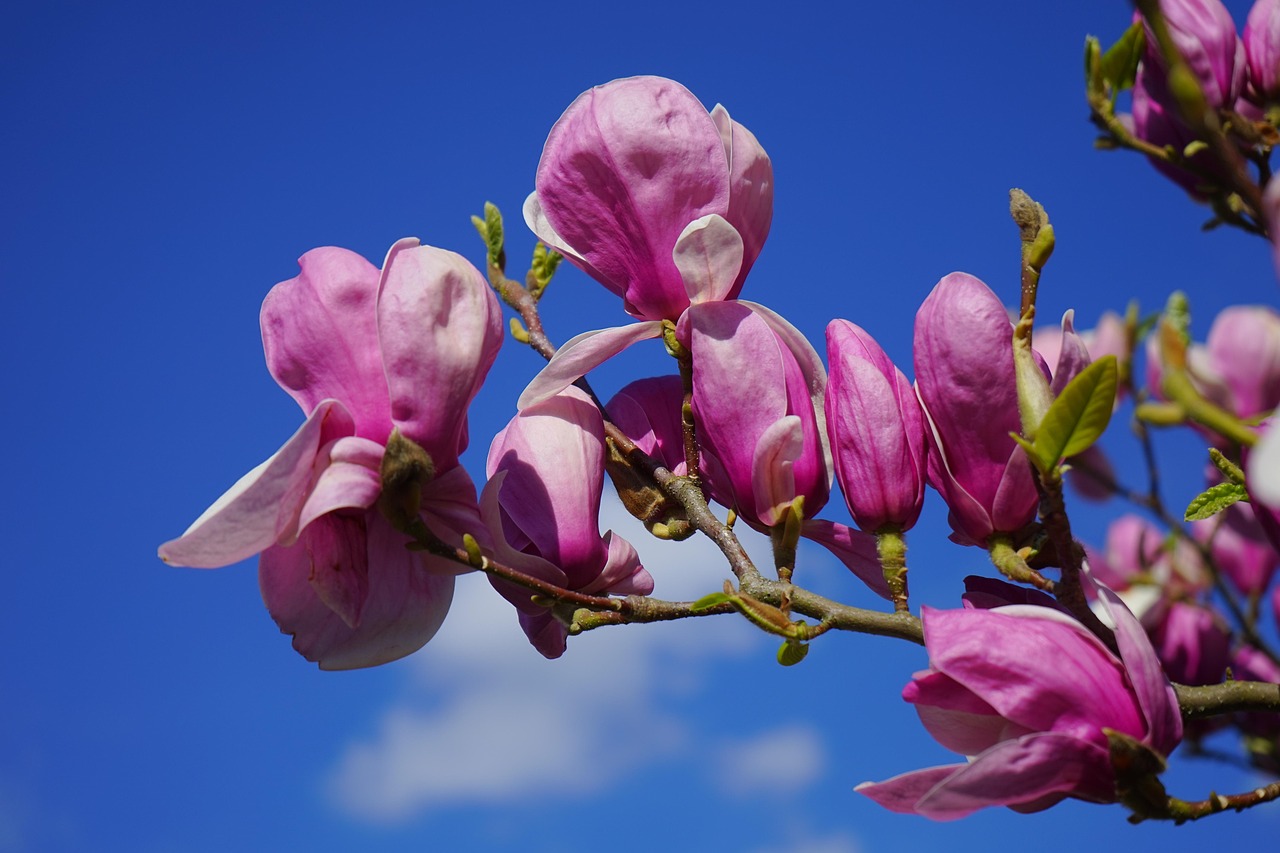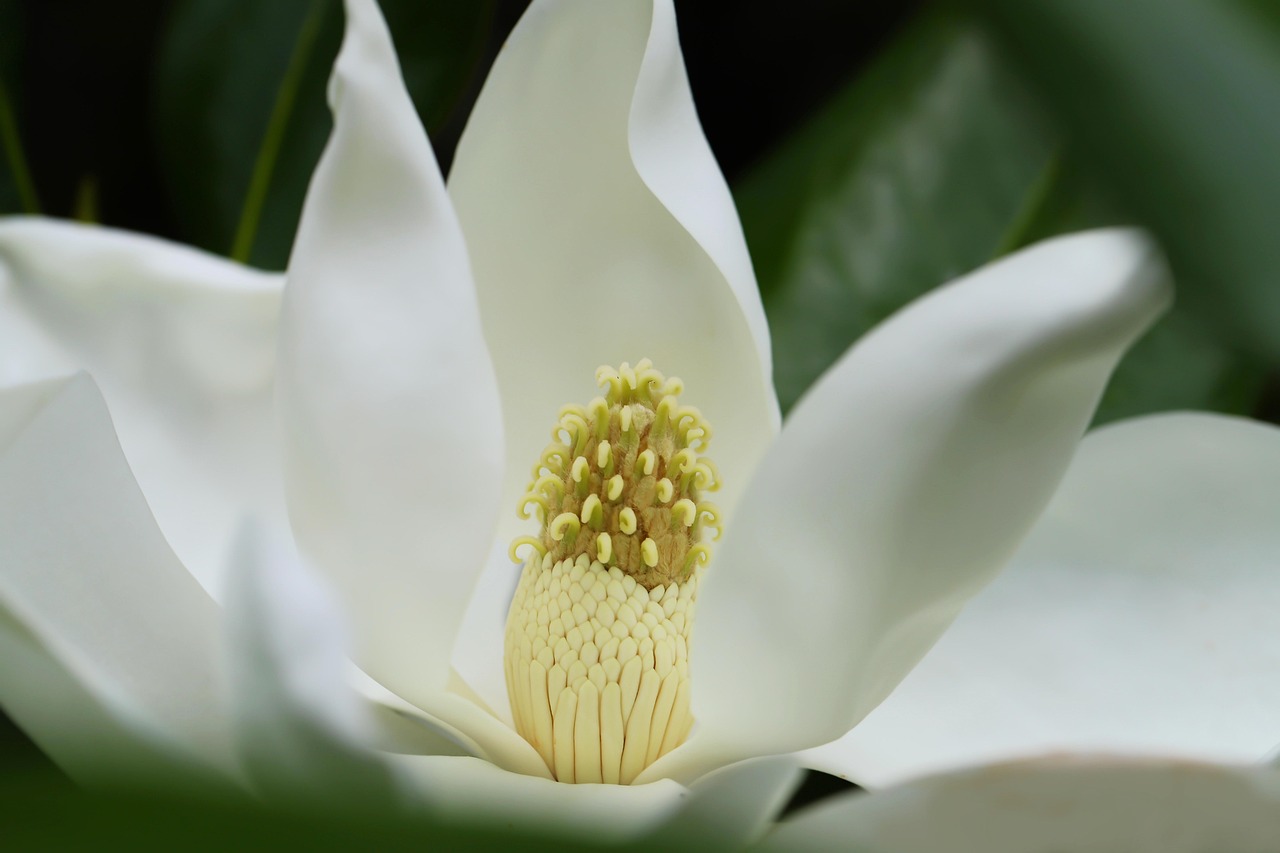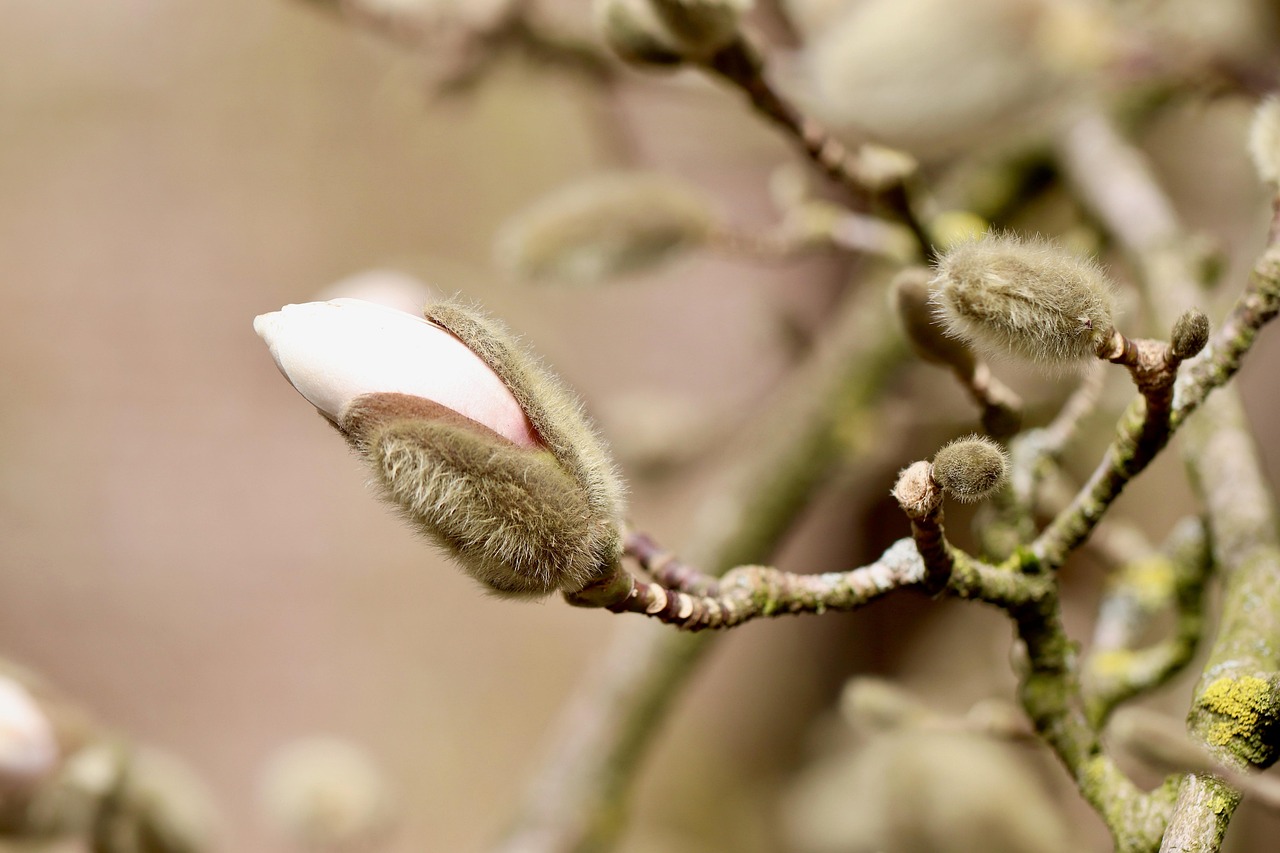The magnolia tree is a unique plant that can lose its leaves in winter, depending on the variety. Some types are deciduous and do shed their leaves, while others are evergreen and retain their foliage year-round. Understanding this process involves looking at how these trees enter dormancy during colder months.
Understanding Magnolia Trees

Magnolia trees are renowned for their stunning flowers and glossy leaves. They belong to the family Magnoliaceae, which includes over 200 species. These trees are native to various regions, including North America, Asia, and parts of South America. Their beauty and fragrance make them popular choices for gardens and landscapes.
Magnolia trees can be categorized into two main types: deciduous and evergreen. Deciduous magnolias shed their leaves in the fall, preparing for winter dormancy. Evergreen magnolias, on the other hand, keep their leaves throughout the year. The differences between these types play a significant role in how they adapt to seasonal changes.
Deciduous vs. Evergreen Magnolias
Deciduous magnolias are often characterized by their large, showy flowers that bloom in spring. As winter approaches, these trees enter a state of dormancy, conserving energy and resources. This dormancy is a survival strategy against cold temperatures and harsh conditions.
Evergreen magnolias maintain their foliage throughout the winter. However, they also experience a form of dormancy. While the leaves remain green, their growth slows down significantly, allowing them to withstand colder months without losing their leaves.
Key Differences
| Feature | Deciduous Magnolias | Evergreen Magnolias |
|---|---|---|
| Leaf Retention | Sheds leaves in fall | Keeps leaves year-round |
| Flowering Season | Blooms in spring | Varies by species |
| Dormancy | Full dormancy in winter | Reduced activity but not full dormancy |
The Process of Dormancy
Dormancy is a natural phase for many trees, including magnolias. This process begins as temperatures drop and daylight hours shorten. During dormancy, trees conserve energy by slowing down their metabolic processes. This adaptation helps them survive adverse weather conditions.
In deciduous magnolias, leaf drop is triggered by environmental signals. As temperatures decline, the tree prepares for winter by absorbing nutrients from its leaves and reallocating them to its roots. This process not only helps the tree survive but also prepares it for new growth in spring.
Evergreen magnolias do not shed their leaves in winter but still undergo dormancy. They may lose some older leaves gradually throughout the year while maintaining their overall appearance. This slow leaf drop is a normal part of their life cycle.
Factors Influencing Dormancy
- Temperature: Cold weather is a primary trigger for dormancy.
- Daylight: Shorter days signal trees to prepare for winter.
- Water Availability: Reduced water supply can lead to dormancy as trees conserve resources.
The combination of these factors helps magnolia trees determine when to enter dormancy. Each species has its unique response to environmental changes, which influences its overall health and growth patterns.
The Importance of Dormancy
Dormancy is crucial for the survival of magnolia trees. It allows them to endure harsh winter conditions while conserving energy. During this period, trees can also strengthen their root systems, ensuring robust growth when spring arrives.
Additionally, understanding dormancy can help gardeners and landscapers care for magnolia trees effectively. Proper care during this phase can lead to healthier trees that bloom beautifully when the warmer months return.
In summary, while some magnolia trees do lose their leaves in winter, others retain theirs. The process of dormancy is vital for both types, allowing them to survive seasonal changes and thrive in their environments.
Types of Magnolia Trees and Their Leaf Retention
Magnolia trees come in various species, each exhibiting different characteristics regarding leaf retention and dormancy. Understanding these variations is essential for anyone interested in planting or caring for magnolias in their gardens or landscapes.
Deciduous Magnolias
Deciduous magnolias are the most well-known type. They typically lose their leaves in the fall, entering a dormant state during winter. Some popular species include:
- Magnolia soulangeana: Also known as the saucer magnolia, it features large, fragrant flowers and vibrant foliage that turns yellow before falling.
- Magnolia stellata: The star magnolia is noted for its star-shaped flowers and can shed its leaves in late autumn.
- Magnolia denudata: Commonly referred to as the Yulan magnolia, it has beautiful white flowers and drops leaves in preparation for winter.
These trees are usually found in temperate regions and thrive in well-drained soils. Their stunning spring blooms are a reward for the leafless winter months.
Evergreen Magnolias
Evergreen magnolias, in contrast, retain their leaves throughout the winter. They are particularly popular in warmer climates. Notable examples include:
- Magnolia grandiflora: Commonly known as the southern magnolia, it has large, glossy leaves and produces fragrant white flowers. The tree maintains its foliage year-round.
- Magnolia figo: Known as the banana magnolia, it features smaller leaves and produces unique aromatic flowers. This species also retains its leaves during winter.
Evergreen magnolias are excellent choices for those looking to maintain greenery throughout the colder months. Their thick leaves provide shelter to wildlife and enhance the aesthetic appeal of gardens.
The Role of Climate in Leaf Loss
The climate where a magnolia tree is planted significantly affects whether it will lose its leaves in winter. Factors such as temperature fluctuations, rainfall, and sunlight can influence dormancy patterns.
Temperature Effects
Cold temperatures signal deciduous magnolias to prepare for winter dormancy. In regions with milder winters, these trees may retain some leaves longer than those in colder climates. For evergreen magnolias, while they do not shed leaves, they still experience changes in leaf behavior due to temperature:
- Leaf Aging: Older leaves may yellow and fall gradually, even when new growth appears.
- Stress Responses: If temperatures drop abruptly, evergreen varieties might shed some leaves to cope with stress.
Rainfall and Soil Moisture
The availability of water also plays a critical role in the health of magnolia trees during dormancy. Insufficient rainfall can lead to stress, prompting deciduous varieties to lose leaves earlier than expected. Additionally, evergreen magnolias may respond to drought conditions by dropping older leaves to conserve moisture.
The Impact of Dormancy on Growth and Health
Dormancy is not just about surviving winter; it also sets the stage for healthy growth in spring. During this resting period, magnolia trees focus on strengthening their root systems. A robust root system is vital for nutrient absorption and overall tree health.
Nutrient Storage and Mobilization
As deciduous magnolias shed their leaves, they recycle nutrients from them back into their roots. This process ensures that the trees have sufficient resources available when they begin to grow again in spring. For evergreen varieties, they also store nutrients but at a different rate since they retain their foliage.
Pest and Disease Resistance
A well-established dormant phase helps magnolia trees build resilience against pests and diseases. Trees that undergo a proper dormancy period are generally healthier and less susceptible to infestations. Additionally, many pests are less active during colder months, reducing the risk of damage during dormancy.
Caring for Magnolia Trees During Dormancy
Caring for magnolia trees during their dormant phase is crucial for ensuring their health and resilience through winter. Here are some tips for proper care:
- Watering: Ensure your trees are adequately watered before winter. Moist soil can help protect roots from extreme cold.
- Mulching: Apply mulch around the base of the tree to retain moisture and insulate roots from freezing temperatures.
- Pest Control: Monitor for any signs of pests or diseases before dormancy begins. Taking preventive measures can help maintain tree health.
- Pruning: Avoid heavy pruning during dormancy as it can stress the tree. Instead, conduct any necessary pruning just before the growing season begins.
By following these care tips, gardeners can support their magnolia trees during the winter months and ensure vibrant growth when spring arrives. Proper attention to these aspects can lead to stunning blooms and healthy foliage year after year.

Common Issues During Dormancy
<

p>While dormancy is a natural and essential phase for magnolia trees, various issues can arise that may affect their health and growth. Understanding these challenges is vital for successful tree care.
Leaf Drop in Deciduous Magnolias
One of the primary concerns for deciduous magnolias is premature leaf drop. Factors contributing to this issue can include:
- Environmental Stress: Sudden changes in temperature or prolonged drought can stress the tree, leading to early leaf loss.
- Pests and Diseases: Infestations or infections can weaken the tree’s health, causing it to shed leaves as a defense mechanism.
- Nutrient Deficiency: Lack of essential nutrients can impair the tree’s ability to maintain its leaves, prompting them to fall prematurely.
Pest Infestations
Even during dormancy, magnolia trees can face pest issues. Some common pests include:
- Magnolia Scale: This insect attaches to tree branches, sucking sap and weakening the tree. It can cause yellowing leaves and premature leaf drop.
- Spider Mites: These tiny pests thrive in dry conditions and can cause damage by feeding on leaf tissue. They may remain active even in winter if conditions are favorable.
- Leaf Spot Fungus: This fungal disease can affect leaves before they drop, leading to unsightly spots and early leaf loss.
Regular monitoring for these pests is crucial, even in winter. Early detection can help prevent severe damage to the tree.
Winter Care Strategies
Caring for magnolia trees during the winter months can help mitigate the effects of dormancy-related issues. Here are some strategies to consider:
Protecting Roots from Freezing
The roots of magnolia trees are particularly vulnerable to freezing temperatures. To protect them, consider the following:
- Deep Mulching: Apply a thick layer of mulch around the root zone. This helps insulate the soil and maintain a stable temperature.
- Using Burlap Wraps: For young trees, wrapping burlap around the trunk can protect against extreme cold and wind damage.
Water Management
Proper water management during winter is essential. Here are some tips:
- Adequate Watering: Ensure that your magnolia trees receive sufficient water before the ground freezes. Deep watering helps saturate the soil and protects roots from dehydration.
- Avoid Overwatering: Once temperatures drop significantly, reduce watering frequency since the tree’s uptake will decrease during dormancy.
The Importance of Timing in Magnolia Care
Timing is crucial when caring for magnolia trees throughout their life cycle. Quick action before and during dormancy can significantly impact their health.
Timing for Pruning
The best time to prune magnolia trees is just before they start their growth cycle in early spring. Pruning during dormancy can stress the tree, leading to potential health issues. To ensure proper timing:
- Monitor Weather Patterns: As temperatures begin to rise and buds start to swell, this is an ideal time for pruning.
- Avoid Late Winter Pruning: Pruning too late can expose fresh cuts to frost damage, which may harm the tree.
Preparing for Spring Growth
As winter ends, preparing for the growth phase is essential. Here are steps to take as dormancy ends:
- Fertilization: Applying a balanced fertilizer at the start of spring can provide essential nutrients needed for new growth.
- Pest Inspection: Conduct a thorough inspection for pests and diseases as temperatures rise. Early treatment can prevent infestations from becoming problematic.
Conclusion on Magnolia Leaf Retention and Dormancy
The care you provide during the dormancy phase directly influences the health and performance of your magnolia trees in the growing season. By understanding their needs and potential challenges, you can ensure that your magnolias thrive beautifully year after year.
Additional Considerations for Magnolia Tree Care
<

p>Beyond the basics of dormancy and seasonal care, there are several additional considerations that can impact the overall health and beauty of magnolia trees. These factors range from soil health to location, and they play a significant role in how well magnolias thrive.
Soil Quality and Composition
The type of soil in which magnolia trees are planted greatly influences their growth and health. Magnolias prefer well-drained, rich soil that retains moisture without becoming waterlogged. Here are some tips for ensuring optimal soil conditions:
- Testing Soil pH: The ideal pH for magnolias is between 5.5 and 6.5. Testing your soil can help you determine if amendments are needed.
- Amending Soil: Incorporate organic matter such as compost or well-rotted manure to improve soil structure and nutrient content.
- Avoiding Heavy Clay: If your garden has heavy clay soil, consider creating raised beds to promote better drainage.
Location and Sunlight
The location of magnolia trees is essential for their health. Most species thrive in full sun to partial shade. Proper placement can enhance flowering and overall vigor:
- Sun Exposure: Ensure that your magnolia receives at least six hours of direct sunlight each day for optimal growth.
- Wind Protection: Plant magnolias in a location that provides some shelter from strong winds, as this can damage branches and affect flowering.
- Spacing Considerations: Allow adequate space between magnolias and other plants to prevent competition for nutrients and sunlight.
Common Misconceptions about Magnolia Trees
Several misconceptions exist regarding magnolia trees, particularly related to their leaf retention and dormancy. Addressing these misunderstandings can help gardeners make informed decisions:
- All Magnolias Are Deciduous: Many people assume all magnolia species lose their leaves in winter. In reality, many evergreen varieties retain their leaves year-round.
- Leaf Drop Equals Tree Death: Some may worry that leaf loss indicates a dying tree. However, leaf drop is a natural process for deciduous species during dormancy.
- Magnolias Require High Maintenance: While they do need care, magnolias are relatively low maintenance compared to other flowering trees, especially once established.
Pest Control Strategies
Effective pest management is crucial for maintaining the health of magnolia trees throughout the year. Here are some strategies to consider:
- Natural Predators: Encourage beneficial insects like ladybugs and lacewings that feed on common pests.
- Neem Oil Sprays: Use organic neem oil sprays as a preventative measure against pests while being safe for the environment.
- Cultural Practices: Maintain good hygiene by clearing fallen leaves and debris around the base of the tree to minimize pest habitat.
Final Thoughts
Understanding whether magnolia trees lose their leaves in winter involves delving into the complexities of dormancy, species differences, and environmental factors. Deciduous varieties shed their leaves as a natural response to seasonal changes, while evergreen types retain their foliage but still go through a form of dormancy.
Caring for magnolia trees requires attention to watering, soil quality, and pest management to ensure robust health during the growing season. By implementing proper care strategies during dormancy and understanding the specific needs of different magnolia species, gardeners can enjoy the remarkable beauty of these trees year after year.
The rich history and cultural significance of magnolia trees further enhance their appeal. From their stunning flowers to their majestic presence in landscapes, magnolias hold a special place in gardening and horticulture. By appreciating their unique characteristics and providing thoughtful care, anyone can cultivate healthy magnolia trees that thrive through each season.
In conclusion, whether you are an experienced gardener or just starting out, understanding the nature of magnolia trees will empower you to create a flourishing environment for these beautiful plants. With a little knowledge and care, you can ensure that your magnolias will bring joy and beauty to your landscape for many years to come.
